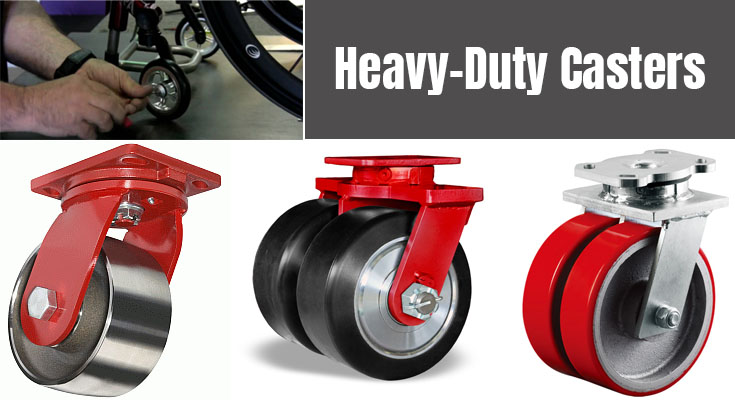You should be able to determine the weight capacity of your heavy equipment by using the casters’ capacity rating. You can choose the weight capacity by adding the weight of the equipment to the cart plus the safety margin of 33%. Then, divide this number by the number of casters you need to purchase. Then, buy the heavy-duty casters according to the weight rating. Lastly, make sure that you know how to install them properly.
Buying heavy-duty casters
Heavy-duty casters are a critical piece of hardware for material handling equipment. Heavy-duty casters come in many different types, typically attached to the bottom of a dolly, cart, or other equipment parts. Different casters will function differently in different environments, so selecting one with a rating for the application you’ll use is essential. This way, you’ll know the weight capacity of the casters and get the right fit for your needs.
For a variety of applications, heavy-duty casters are the best choice. They’re easy to install and make moving heavy equipment simple. They also make it easier to clean storage and walk-in areas. In addition to providing mobility, casters also have a high load capacity and are perfect for lifting objects over a considerable distance. But which ones are the best? There are several reasons to invest in these products.
Types of casters
When it comes to moving and transportation, heavy-duty casters are essential tools. They help move heavy objects, including trash cans, packages, and furniture. They can even help move heavy objects inside factories, making them easier to move. Here are some of the most common uses of heavy-duty casters in industrial settings. If you’re in the market for some new heavy-duty casters, read on to discover some of the benefits of this popular type of wheel.
There are two types of heavy-duty casters: fixed and swivel. Fixed heavy-duty casters are used in tandem, while heavy-duty swivel casters are designed to turn. In addition, fixed heavy-duty casters come with a braking mechanism to prevent them from rolling away. Both types can be used to move heavy items, and each type offers advantages for various purposes.
Cost
Heavy-duty casters are crucial pieces of hardware that help you move heavy items around. They are usually attached to the bottom of carts, dollys, and other material-handling equipment. The heavy-duty casters available include polyurethane, solid elastomer, and steel. Each material provides varying levels of strength and support for heavy loads. The following is a brief description of each type of heavy-duty caster.
Generally, heavy-duty casters are rated for five hundred pounds of load capacity. This may seem like a lot, but the weight capacity of each caster is different. Consequently, it’s crucial to choose the right type of casters based on the weight capacity of each caster. You should also consider the safety margin of 33% when determining the weight capacity of the casters. Finally, divide the total weight of your cart by the number of casters. The result is the weight rating for your cart.
Installation
Regardless of the application, heavy-duty casters are essential in commercial kitchens. These wheels can be made of many materials, including cast iron, ductile steel, nylon, and polyurethane. The main difference between these materials is how they hold up against heavy loads. Hard materials can cause the wheels to collect debris and create grooves on floors. Such damage can lead to costly repairs.
Before purchasing suitable casters, you should know how to install them. Heavy-duty casters are made to hold up to 800 pounds of equipment. To install these casters, you first need to know the diameter of the wheel, including the tire if it is mounted. Next, the height is measured from the top mounting surface to the bottom of the wheel. If you choose to purchase a light-duty caster, you can push the stem into the socket of the existing casters. To determine their strength, make sure that both the diameter and length of the stem match.










